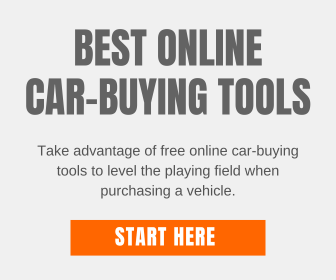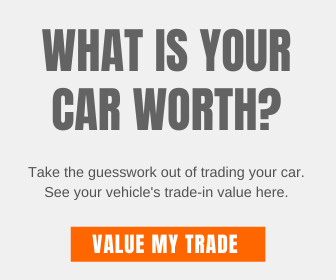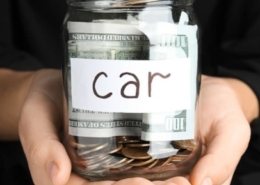15 Annoying Car Salesman Techniques: Know Before You Go
Goodbye car-buying stress! Guide to 15 annoying car salesman tactics and how to counter them.
Disclaimer: While this guide highlights specific tactics used by car salespeople, it’s important to note that not all individuals in the industry engage in unethical practices. Many salespeople operate with integrity and aim to provide a positive and transparent car-buying experience. Always approach each interaction with an open mind and judge based on the specific actions of the individuals you encounter.
Welcome to the jungle of car sales, where the symphony of roaring engines harmonizes with the energetic dance of salespeople.
It’s an exhilarating landscape where automobiles and savvy sales tactics combine in a lively, dynamic performance.
In this guide, we’ll explore 15 annoying car salesman techniques and show you how to counter each easily.
Imagine me as your friendly advocate, ready to steer you through the ups and downs of purchasing a car, ensuring you drive away with the keys to your dream ride.
From tricky discounts to feeling rushed, I’ll help you handle it all. Prepare to understand deceptive car salesman tactics, face challenges, and confidently drive off.
Your car-buying journey begins right now!
Car Buying Tip: If you’re in the market for a new car, you may have noticed that finding a reasonable price can be difficult in today’s market. Many car buyers end up paying more than the suggested retail price. But don’t worry! You can still get a great deal on a new vehicle by requesting a free car price quote to compare dealer prices in your area.
Table of Contents
- 15 annoying car salesman techniques
- The overzealous greeting
- What’s your budget?
- Phantom discount
- Pressure cooker
- The four-square worksheet
- Hidden fees
- The manager charade
- The trade-in trick
- Financing fumble
- Limited time offer
- Upsell avalanche
- Emotional manipulation
- The test drive tether
- Closing room crunch
- Navigating the car buying jungle
- Frequently asked questions
- Final thoughts
- Make a car-buying decision
15 Annoying Car Salesman Techniques
In car sales, specific tactics persist as ever-present challenges for buyers.
These 15 annoying car salesman techniques are not just widespread; they’re actively employed in nationwide dealerships.
It’s time to unveil these tactics and learn to overcome them in your car-buying journey.
1. The Overzealous Greeting
You step onto the lot, and suddenly, you’re the show’s star.
But is this friendly salesperson genuinely interested in your well-being or just trying to close a deal?
Here’s how to handle the overeager greeting:
- Tip 1: Politely acknowledge their enthusiasm without giving away too much.
- Tip 2: Take your time and explore the lot on your terms.
- Tip 3: Politely set boundaries – let them know when you’re ready for assistance.
- How to Buy a New Car Below Factory Invoice Price – True dealer cost and the factory invoice price are not the same… dealer cost can be much lower.
- Figure a Fair Profit New Car Offer – How to calculate a fair profit new car offer.
- How to Buy a New Car Online – Not sure where to start? Use my step-by-step guide on how to buy a new car online.
2. The “What’s Your Budget?” Conundrum
Ah, the budget question – a classic move.
The “What’s Your Budget?” question is a classic move in the car sales playbook. Salespeople often ask this to understand your financial boundaries and tailor their offerings accordingly.
However, it can be a tricky situation as divulging your budget too early might put you at a negotiation disadvantage.
They may use this information to present options that align with your budget, possibly limiting your choices or affecting the negotiation process.
Therefore, it’s advisable to navigate this question carefully, focusing on the features and value you seek in a car rather than revealing specific financial figures too soon. This allows you to maintain control during the early stages of the car-buying process.
Here’s how to tackle this tricky situation without revealing your entire financial playbook:
- Tip 1: Deflect the question initially, focusing on the features you’re interested in.
- Tip 2: Research cars online beforehand with a ballpark figure in mind.
- Tip 3: Share your budget strategically after you’ve gathered enough information.
3. The Phantom Discount
Is that tempting discount on the sticker price too reasonable to be true?
When a tempting discount appears on the sticker price, it raises the question: is it a good deal, or is there more to it?
Car salespeople might use these discounts as a marketing strategy, creating an impression of a significant price reduction.
However, the actual mechanics of these discounts may involve certain conditions, qualifications, or trade-offs.
Let’s uncover the truth behind the elusive discounts:
- Tip 1: Scrutinize the details of the discount – is it conditional?
- Tip 2: Research the car’s market value to gauge the discount’s authenticity.
- Tip 3: Don’t hesitate to ask for clarification on how the discount is applied.
4. The Pressure Cooker: Urgency Tactics
“Act now, or miss out forever!” Don’t let the urgency tactics rattle your nerves.
Imagine this scenario: You’re at the dealership, exploring different car options, and suddenly, the salesperson drops a bombshell.
They enthusiastically declare, “This incredible deal is only valid for today! Act now, or you’ll miss out on this once-in-a-lifetime opportunity!”
The pressure cooker is turned up, and you can feel the urgency.
In this situation, the salesperson might use urgency tactics to create a sense of scarcity and prompt you to make a quick decision.
They may emphasize tricky dealership advertising techniques such as limited-time promotions and exclusive offers or suggest that the particular car model you’re interested in is in high demand and might be sold to someone else soon.
However, it’s essential to recognize these pressure tactics for what they are—strategies designed to expedite your decision-making process.
By staying cool under this pressure cooker, you can take a step back, evaluate the offer objectively, and make a decision that aligns with your needs and timeline rather than succumbing to artificial urgency.
Here’s how to stay calm under the pressure cooker:
- Tip 1: Take a deep breath and assess if the urgency is genuine or manufactured.
- Tip 2: Politely express your need for time to consider the decision.
- Tip 3: Be willing to walk away – true urgency allows careful consideration.
5. The Four-Square Worksheet: Decoding the Numbers Game
The Four-Square Worksheet is a standard tool used by car salespeople in dealerships during the negotiation phase.
It’s a simple document divided into four quadrants, each representing a vital aspect of the deal.
Here’s how it generally works:
- Trade-in Value: One quadrant is dedicated to assessing the value of your trade-in vehicle. The salesperson will evaluate your current car’s worth, considering its condition, mileage, and market value.
- Vehicle Price: This quadrant displays the car price you want. The salesperson will present the initial cost before any negotiations or discounts.
- Down Payment: Here, the down payment amount is outlined. The salesperson may suggest a down payment based on your financial situation or to meet specific financing requirements.
- Monthly Payment: This quadrant shows the estimated monthly payment for financing the car. It factors in the price, down payment, interest rate, and loan term.
The purpose of the Four-Square Worksheet is to simplify the negotiation process and provide transparency.
However, it’s crucial to approach it with a discerning eye. Salespeople may use it to manipulate certain variables, creating an illusion of compromise while potentially favoring the dealership.
Consumers should be aware that each quadrant is negotiable independently. For instance, you can negotiate the trade-in value separately from the vehicle price or monthly payment.
Understanding the Four-Square Worksheet empowers buyers to engage in more informed and strategic negotiations, ensuring they secure a deal that aligns with their preferences and budget.
Let’s break down the four-square method and empower you to negotiate like a pro:
- Tip 1: Understand each quadrant – price, trade-in value, down payment, and monthly payment.
- Tip 2: Negotiate one element at a time to maintain control.
- Tip 3: Be prepared to walk away if the numbers don’t align with your expectations.
7. The “Let Me Talk to My Manager” Charade
Is the classic “let me check with my manager” move a genuine effort or a stalling tactic?
Here’s how it typically unfolds:
- Stalled Negotiation: During the negotiation process, when a customer raises a specific concern, asks for a better deal, or requests additional concessions, the salesperson may respond with, “Let me talk to my manager.”
- Leaving the Room: The salesperson may then excuse themselves from the negotiation table, suggesting they consult their manager to address the customer’s request. This often involves physically leaving the room, creating a moment of anticipation and suspense.
- Manager’s “Approval”: Upon returning, the salesperson may convey that they’ve discussed the matter with their manager and received special approval or considerations. This can create the impression that the customer is getting a unique, one-time offer that requires managerial intervention.
- Negotiation Dynamics: The “Let Me Talk to My Manager” charade serves multiple purposes. It can give the impression that the salesperson is working on the customer’s behalf, creating a sense of exclusivity and urgency. Additionally, it allows the salesperson to maintain a position of negotiation power, implying that they advocate for the customer within the dealership.
While this tactic is a standard part of the negotiation dance in car sales, customers should approach it skeptically.
It’s essential to remember that salespeople are skilled negotiators, and the manager’s involvement might be part of a well-rehearsed script.
To navigate this charade effectively, customers can:
- Tip 1: Acknowledge the need for the salesperson to consult with their manager while maintaining a level-headed approach.
- Tip 2: Politely request details about the manager’s considerations or approvals, ensuring transparency in the negotiation process.
- Tip 3: Be prepared to stick to your negotiation points and not be swayed solely by the manager’s involvement. If the offer doesn’t align with your expectations, don’t hesitate to continue negotiating or walk away if necessary.
8. The Trade-In Trick: Getting Less Than Your Car’s Worth
Trading in your old car?
The “Trade-In Trick” refers to a situation where a car buyer may receive less than the actual worth of their old car during a trade-in process at a dealership.
Here’s how it generally works:
- Evaluation by Dealership: When you express interest in trading in your existing vehicle for a new one, the dealership will evaluate your old car. They consider the car’s condition, mileage, age, and market demand.
- Lower Valuation: In some instances, the dealership may offer a valuation for your trade-in that is lower than the actual market value of the car. This allows the dealership to potentially increase its profit margin on the trade-in and the sale of the new vehicle.
- Negotiation Strategy: Offering a lower trade-in value can be a strategic move by the dealership during negotiations. They may present a seemingly more favorable deal on the new car while compensating for it by undervaluing the trade-in.
To maximize your trade-in value:
- Tip 1: Before heading to the dealership, research the market value of your old car using reputable sources. This knowledge provides a baseline to assess the fairness of the dealership’s offer.
- Tip 2: Ensure your trade-in is in good condition by addressing any necessary maintenance or repairs before the trade-in evaluation. A well-maintained vehicle often commands a higher value.
- Tip 3: Consider obtaining trade-in offers from multiple dealerships and online wholesalers such as Peddle that will come and pick up your car from your home or business. This provides a comparison and creates a competitive environment that may lead to better trade-in values.
- Tip 4: If the trade-in value seems lower than expected, you can choose to separate the transactions. Sell your old car privately to potentially get a higher value and then negotiate the purchase of the new car.
9. The Financing Fumble: A Maze of Interest Rates
Don’t let the financing maze trip you up.
The “Financing Fumble” refers to the complexities and potential pitfalls of navigating interest rates and financing options when purchasing a car.
Here’s how it often plays out:
- Interest Rate Variability: Interest rates on car loans can vary based on factors such as credit score, loan term, and economic conditions. Buyers might find themselves in a maze of different rates, making it challenging to understand the actual cost of financing.
- Misleading Terms: In some cases, buyers might encounter misleading terms or financing offers that seem favorable but may have hidden costs. This can include low teaser rates that later increase or complex financing structures that are not transparent.
- Pressure to Accept: During the financing phase at the dealership, there may be pressure to accept a particular interest rate or financing option quickly. This pressure can be intensified by the excitement of the car-buying process and the desire to complete the transaction promptly.
To navigate the Financing Fumble:
- Tip 1: Know your credit score before entering the dealership. A higher credit score often leads to more favorable interest rates.
- Tip 2: Get preapproved for an auto loan before visiting the dealership. You can do this with your bank, credit union or use an online auto lender for the best rates. This will give you a solid foundation for negotiating with the dealership’s finance department. You will already know the interest rate you qualify for, your monthly payment, and how much vehicle you can comfortably afford.
- Tip 2: Stay informed about prevailing interest rates for car loans. This knowledge gives you a benchmark for evaluating the rates offered by the dealership.
- Tip 3: Carefully review all terms and conditions of financing offers, paying attention to any potential hidden fees, penalties, or rate adjustments.
- Tip 4: Explore financing options from banks or credit unions before visiting the dealership. This can provide a baseline for comparison and potentially offer more favorable terms.
- Tip 5: Don’t succumb to pressure. Take the time to understand the financing terms thoroughly. If something is unclear, ask for clarification.
10. The Limited-Time Offer: A Clock Ticking on Your Sanity
“Act now, or the deal is off!”
The “Limited-Time Offer” in the car dealership is a sales strategy designed to create a sense of urgency and prompt immediate action from potential buyers.
Understand the psychology behind limited-time offers with these insights:
- Time Constraints: The dealership presents a special offer, such as a discounted price, promotional financing, or additional perks, but attaches a tight deadline. This could be framed as a one-day sale, a weekend special, or a promotion expiring at the end of the month.
- Psychological Impact: The goal is to trigger a psychological response in buyers, leveraging the fear of missing out (FOMO). By suggesting that the deal is only available for a limited time, the dealership aims to expedite the decision-making process.
- Pressure to Decide Quickly: Buyers may feel pressured to make a quick decision under the fear that the enticing offer will disappear if they don’t act promptly. This urgency can lead to rushed decisions without thorough consideration.
To navigate Limited-Time Offers:
- Tip 1: Evaluate the offer to ensure it meets your needs and preferences. Don’t be swayed solely by the urgency.
- Tip 2: Check if similar offers or promotions are available at other dealerships. This comparison provides context and helps determine if the limited-time aspect is a genuine opportunity or a sales tactic.
- Tip 3: If the deal aligns with your goals but needs more time, don’t hesitate to negotiate an extension. Dealerships may be willing to accommodate reasonable requests.
- Tip 4: Recognize the psychological pressure and stay calm. Take the time you need to make an informed decision rather than succumbing to the urgency created by the limited-time offer.
11. The Upsell Avalanche: From Floor Mats to Extended Warranties
Floor mats, extended warranties, and other add-ons – do you need them?
The “Upsell Avalanche” in a car dealership is like a snowball effect of additional products and services offered to buyers beyond the initial vehicle purchase.
Here’s a breakdown of this upselling phenomenon:
- Floor Mats, Extended Warranties, and More: Once you’ve chosen your desired car model, the salesperson may suggest a range of add-ons. These can include simple items like floor mats, upgraded features, and more substantial offerings like extended warranties, protection packages, or service plans.
- Incremental Costs: Each add-on comes with its price tag. As you consider these extras, the overall cost of your purchase starts to increase incrementally. It’s the classic “Would you like fries with that?” scenario, but in the context of car buying.
- Pressure Tactics: The salesperson may use persuasive tactics to encourage you to accept these add-ons. They might emphasize the benefits of convenience or suggest that certain items are essential for a complete and satisfactory car ownership experience.
To navigate the Upsell Avalanche effectively:
- Tip 1: Differentiate between essential items and those that are more of a luxury. While floor mats might be practical, an extended warranty might be optional, depending on your preferences and the car’s reliability.
- Tip 2: Before entering the dealership, establish a budget not just for the car itself but also for potential dealer add-ons. This helps you stay within your financial comfort zone and prevents overspending.
- Tip 3: Take the time to research add-ons independently. Understand their market value, compare prices, and determine whether they align with your needs and expectations.
- Tip 4: Ask questions about its value when presented with an upsell. Consider whether the cost justifies the benefits and whether the product or service is something you genuinely need.
- Tip 5: Feel empowered to negotiate the cost of add-ons or decline them if they don’t align with your priorities or budget. Remember, you have the right to make decisions that suit your needs.
12. The Emotional Manipulation: Tugging at Your Heartstrings
Emotional manipulation is a big part of the psychology of car buying and is a sales tactic as old as time.
The “Emotional Manipulation” tactic in sales involves leveraging emotions to influence a buyer’s decision-making process.
Here’s how it typically works, especially in the context of a car dealership:
- Appeal to Emotions: Salespeople may intentionally evoke excitement, fear, nostalgia, or a sense of urgency to create a heightened emotional state in the buyer.
- Storytelling: They might share emotionally charged stories, personal anecdotes, or narratives about other customers to establish a connection and tug at the buyer’s heartstrings.
- Creating Attachment: The goal is to create an emotional attachment between the buyer and the product, in this case, the car. This emotional connection can cloud rational judgment and make the buyer more receptive to the salesperson’s suggestions.
To protect yourself from emotional manipulation:
- Tip 1: Be aware of your emotional state during the car-buying process. If you feel overwhelmed with emotion, take a step back and reassess your decisions.
- Tip 2: While emotions are a natural part of the car-buying experience, balancing them with logical decision-making is crucial. Evaluate the features, costs, and practical aspects of the purchase.
- Tip 3: Ask for concrete facts and details when presented with emotionally charged stories or pitches. This helps separate the emotional appeal from the practical aspects of the deal.
- Tip 4: Emotional manipulation often thrives on urgency. Take your time to make decisions. If a deal is genuinely good, it will likely remain available after careful consideration.
- Tip 5: Seek opinions from friends, family, or trusted individuals who can provide a more objective perspective. They can offer insights and advice that emotional tactics may not sway.
13. The Test Drive Tether: How Long is Too Long?
Taking a test drive is crucial, but how much time is too much?
The “Test Drive Tether” refers to determining how much time is appropriate for a test drive.
Strike the right balance with these test drive tips:
- Importance of Test Drives: Test drives are a crucial part of the car-buying process. They allow buyers to experience the vehicle firsthand, evaluate its performance, and assess how well it suits their needs and preferences.
- Test Drive Duration: The challenge arises when determining how long a test drive should last. While it’s essential to assess the car, spending excessive time thoroughly can potentially inconvenience the dealership and affect their schedule.
To strike the right balance during a test drive:
- Tip 1: Before arriving at the dealership, communicate your intention to take a test drive. This allows the staff to plan accordingly and allocate the necessary time.
- Tip 2: During the test drive, focus on critical aspects vital to you. Evaluate the vehicle’s handling, comfort, and features efficiently without unnecessary delays.
- Tip 3: If there are specific features or functions you’re unsure about, ask questions during the test drive. This can help clarify concerns and reduce the need for an extended drive.
- Tip 4: Be mindful of the dealership’s schedule and other potential customers waiting their turn. Avoid prolonging the test drive if you’ve already formed a solid impression.
- Tip 5: If the test drive leaves you with lingering questions or uncertainties, express your interest to the salesperson. They may provide additional information or suggest alternative solutions to address your concerns.
14. The Closing Room Crunch: Where Dreams Meet Hard Reality
You’ve decided, but what awaits you in the closing room?
The “Closing Room Crunch” refers to the final stage of the car-buying process, where the buyer transitions from making decisions and negotiating to finalizing the deal.
Brace yourself for the final stretch with these closing room tips:
- Decision Made: When you reach the closing room, you have likely selected a car, negotiated the terms, and are ready to purchase.
- Transition to Finalization: The final paperwork and documentation are completed in the closing room. It’s the last step before officially taking ownership of the vehicle.
To navigate the closing room crunch:
- Tip 1: Carefully review all the documents presented to you. This includes the sales contract, financing agreements, and any additional paperwork related to the purchase.
- Tip 2: If any dealer terms or details seem unclear, don’t hesitate to ask for clarification. It’s crucial to have a complete understanding of the commitments you are making.
- Tip 3: Ensure that the financial details, such as the purchase price, interest rates, and additional fees, align with the negotiated terms. If you notice discrepancies, bring them to the attention of the staff.
- Tip 4: Be aware of any add-ons or optional services that may be presented in the closing room. These could include extended warranties, protection plans, or additional features. Confirm whether these are optional or included in the deal.
- Tip 5: Despite the name “Closing Room Crunch,” it’s essential not to feel rushed. Take the time to review and understand all the documents before signing.
- Tip 6: If you have any questions or concerns, don’t hesitate to ask. The closing room staff is there to assist you and provide the necessary information.
FAQs About Annoying Car Salesman Techniques
How do you handle pushy sales tactics?
Stay firm, take your time, and don’t succumb to pressure.
Are inflated interest rates common at dealerships?
Yes, be vigilant, shop around, and secure financing beforehand.
Should I test drive before discussing prices?
Yes, always test drive first to ensure the car meets your expectations.
How to avoid unnecessary add-ons and fees?
Review the contract thoroughly, question any unclear charges, and decline unnecessary add-ons.
How to handle the "good cop, bad cop" routine?
Recognize the tactic, stay composed, and focus on the deal’s details.
Is walking away an effective negotiation strategy?
Yes, it can be powerful. Show you’re willing to walk for a better deal.
Final Thoughts on Annoying Car Salesman Techniques
Buying a car can feel like an adventure with tricky tactics, but remember, knowledge is your best friend.
By understanding these 15 annoying car salesman techniques, you’ve become an intelligent explorer in the car-buying world.
As you drive your dream car, you have the keys to power and the satisfaction of beating the game. Your car-buying journey was like a quest for peace in the chaos, and now you drive away confidently – a winner in the world of cars.
May your future trips be smooth on open roads, with the sweet sound of your victory over tricky tactics.
Safe travels, smart car buyer!
Making an Informed Choice: The Power of Research Before Purchasing
Are you embarking on the adventure of buying a car?
Gear up with knowledge; it’s your ultimate companion, whether buying a new car or sticking to a preowned ride.
This applies to brand-new models and the allure of a pre-loved vehicle; thorough research is your compass in this journey.
Here’s why it matters:
Smart Down Payments: The money you decide to put down impacts your financing rates and monthly payments. A substantial down payment can slash your loan amount, potentially saving you interest.
Deciphering Dealer Profit: Dealerships are in the business to make a profit. Understanding what constitutes a fair profit offer through research helps balance a good deal for you and a reasonable profit for the dealership.
Revealing Dealer Cost: Peek behind the curtain and explore the dealer invoice price or cost. This insight into what the dealership paid for the car empowers you to negotiate effectively, aiming for a fair price that satisfies both parties.
Leverage Online Tools: Before setting foot in a dealership, leverage free online car-buying tools to snag local price quotes. Armed with these figures, you gain a ballpark estimate, ensuring you’re well-prepared and guarded against potential overcharges.
By being proactive and well-informed, you position yourself as a wise consumer, guaranteeing a car you adore and a deal that won’t break the bank.
Remember: In the car-buying race, knowledge is your horsepower!



















